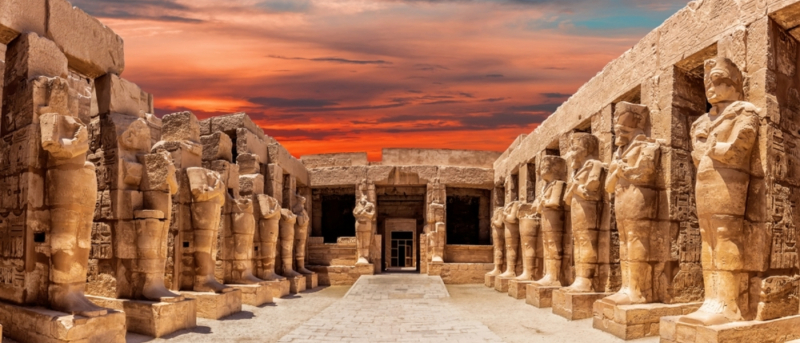Memphis Tours Blogs
An In-Depth Guide to the Solar Eclipse 2027

Experience the celestial spectacle of the century as you witness the longest solar eclipse until 2114. The awe-inspiring solar eclipse of 2027 will be a sight to behold, a rare cosmic event that will captivate skywatchers across the globe. Our comprehensive guide takes you on a journey to understand the details of this celestial phenomenon, its path, the best places for viewing, especially in Egypt, Morocco, and Saudi Arabia, and even the partial eclipse sightings. Embark with us on this celestial expedition.

Understanding Solar Eclipses
A solar eclipse occurs when the Moon positions itself between the Earth and the Sun, casting a shadow that either partially or entirely obscures our view of the Sun. A total solar eclipse, which we will experience in 2027, happens when the Moon's apparent diameter surpasses the Sun's, completely blocking all direct sunlight and transforming day into darkness.
Total Solar Eclipses
What is so special about the Solar Eclipse of 2027
Path of Totality
On August 2nd, 2027, the path of totality for the Solar Eclipse 2027 offers a unique trajectory, sweeping across diverse landscapes and cultures. This path is where observers will experience the full obscuration of the sun by the moon, revealing the dramatic features of the solar corona. The following details encapsulate the geographical and astronomical nuances of this path.
1. Middle East: In the Middle East, the eclipse path crosses through pivotal locations including Luxor in Egypt, where the greatest duration of totality at 6 minutes and 23 seconds is anticipated under almost certain clear skies. It also covers parts of Saudi Arabia and Yemen, enveloping cities like Jeddah and Sana'a.
Somalia.
Astronomical Characteristics
Duration and Magnitude: The eclipse promises an exceptionally long duration of totality, making it a significant event for both amateur and professional astronomers. The maximum total duration near Luxor, Egypt reaches up to 6 minutes and 23 seconds, with an eclipse magnitude of 1.0790, indicating a nearly complete obscuration of the solar disk.
Observational Phenomena: Observers within the path of totality will witness captivating phenomena such as Bailey's beads and the diamond ring effect. Additionally, the proximity of Comet 12P/Pons-Brooks near Jupiter might offer a rare celestial spectacle.
Prime Viewing Locations for Total Eclipse
For an event as magnificent as the solar eclipse 2027, the location from where you view it can greatly enhance your experience. Some locations along the path of totality offer not just a perfect view of the eclipse, but also rich cultural and historical experiences.
1: Egypt: The Epicenter of the Eclipse
Luxor and its Surroundings
Luxor, with its rich cultural and archaeological heritage, is sure to be the focal point of the eclipse-watching world on August 2, 2027. The best, though busiest, place to witness the eclipse will likely be the Valley of the Kings, an area known for its rock-cut tombs excavated for the pharaohs between the 16th and 11th centuries BC.
Sohag
Red Sea
Siwa Oasis
known for its lush palm trees, hot springs, and historical sites. The oasis offers a serene escape from urban life and is a sought-after destination for travelers seeking desert adventures and relaxation, and of course one of the best places to witness the eclipse for 5 minutes and 30 seconds.
Recommended Tours:
5 Day Holiday to Cairo and Luxor


2: Morocco: A Gateway to the Eclipse
Another fascinating location along the path of totality is Morocco. The city of Tangier, located at the junction of the Atlantic Ocean and the Mediterranean Sea, will experience a totality duration of 4 minutes and 50 seconds.
3: Saudi Arabia: The Desert Spectacle
Saudi Arabia, particularly the city of Mecca, will also offer a fantastic viewing point for this solar eclipse. Observers in Mecca can expect a totality duration of an impressive 5 minutes and 8 seconds.
Partial Eclipse Sightings
While the total solar eclipse will be the main event, a partial solar eclipse will also be visible from a much larger area, including the extreme east tip of Maine, United States, far eastern Quebec and the Atlantic Provinces in Canada, southern Greenland, Iceland, Ireland, Great Britain, nearly the entirety of the European continent, all but the southern quarter of Africa, the Middle East, and from South and Southeast Asia.

Preparation and Safety Tips
Viewing a solar eclipse requires careful preparation to ensure not just a good view, but also to protect your eyes from the potentially harmful effects of looking directly at the Sun.
Essential Safety Gear
1. Eclipse Glasses and ISO Certification: To safely view the solar eclipse, it's crucial to use eclipse glasses that meet the ISO 12312-2 standard. These glasses should be free from any scratches, punctures, or silvering and must not transmit more than 0.00032% of sunlight. Regular sunglasses, even if they are polarized, do not offer sufficient protection.
2. Special-Purpose Solar Filters: For those using telescopes, binoculars, or cameras, it is imperative to attach special-purpose solar filters to the front of the optics. These filters should snugly fit and be designed to block out harmful solar radiation effectively. Do not attempt to use any homemade filters or devices like smoked glass or exposed film, as these do not provide adequate protection.
3. Supervision for Children: Children should be closely supervised when using solar viewing gear. Ensure that their eclipse glasses fit securely and that they understand not to remove them while looking at the sun. Special solar projectors or pinhole cameras are recommended for younger children as they provide an indirect way to view the eclipse safely.
Viewing Techniques and Considerations
Indirect Viewing Methods: If proper solar viewing glasses are not available, indirect methods such as pinhole projectors or projecting the Sun's image onto a white screen can be used. These methods do not involve looking directly at the Sun and are safe for viewers of all ages.
Never View Through Unfiltered Devices: It is critical to never look at the Sun through an unfiltered camera, telescope, binoculars, or any optical device without a solar filter. Even with eclipse glasses, looking through an unfiltered device can cause severe eye damage instantly.
Duration of Safe Viewing: The only time it is safe to view the Sun without protection is during the total phase of the eclipse when the Moon completely covers the Sun. At all other times, even during partial phases, viewers must use appropriate eye protection.
The Significance of Solar Eclipse 2027
The solar eclipse 2027 is not just a remarkable astronomical event; it also holds cultural and historical significance. Ancient civilizations often interpreted solar eclipses as omens or messages from the gods. Today, solar eclipses give us the opportunity to come together and marvel at the wonders of our universe.
In conclusion, the solar eclipse of 2027 will be a spectacular event that will captivate and inspire. Whether you're an avid skywatcher, a casual observer, or a traveler seeking a unique experience, this solar eclipse is a must-see event. So mark your calendars, prepare your viewing equipment, and get ready to witness a celestial spectacle like no other!
FAQs
1. What is the trajectory of the 2027 total solar eclipse?
The total solar eclipse on August 2, 2027, will have its path of totality crossing the Atlantic Ocean and passing through several countries including Spain, Morocco, Algeria, Tunisia, Libya, Egypt, Sudan, Saudi Arabia, Yemen, and Somalia.
2. What will occur with the Sun during the 2027 eclipse?
On August 2, 2027, a total solar eclipse will be observed over a large part of the central Eastern Hemisphere. This phenomenon happens when the Moon aligns between the Earth and the Sun, completely or partially blocking the Sun's visibility from Earth.
3. What are the risks of looking at the solar eclipse directly for a brief moment?
Looking at the solar eclipse for even a very short time can be risky. While brief exposure might not always cause damage, there is a potential for harm even within a fraction of a second, leading to solar retinopathy, a condition that results from looking directly at the sun.
4. What was the path of totality for the 2017 solar eclipse?
The path of totality for the solar eclipse in 2017 crossed the United States from Salem, Oregon, to Charleston, South Carolina. This was notable as it was the first eclipse visible across the entire U.S. in 99 years and the first visible in the U.S. in almost four decades.
